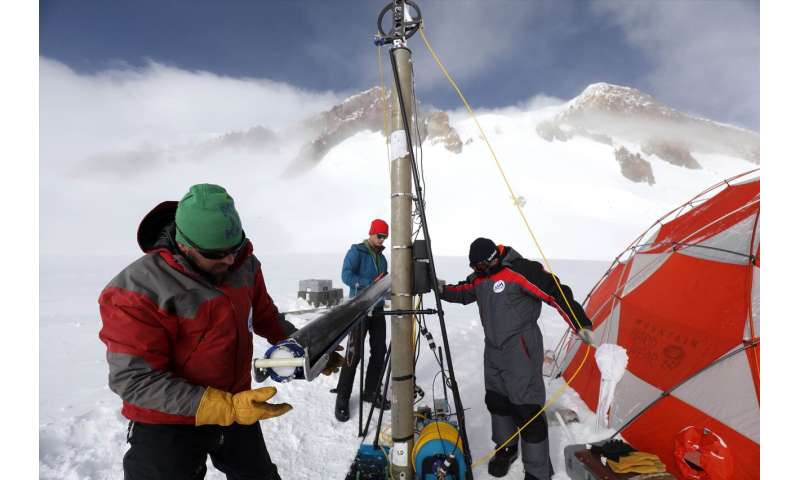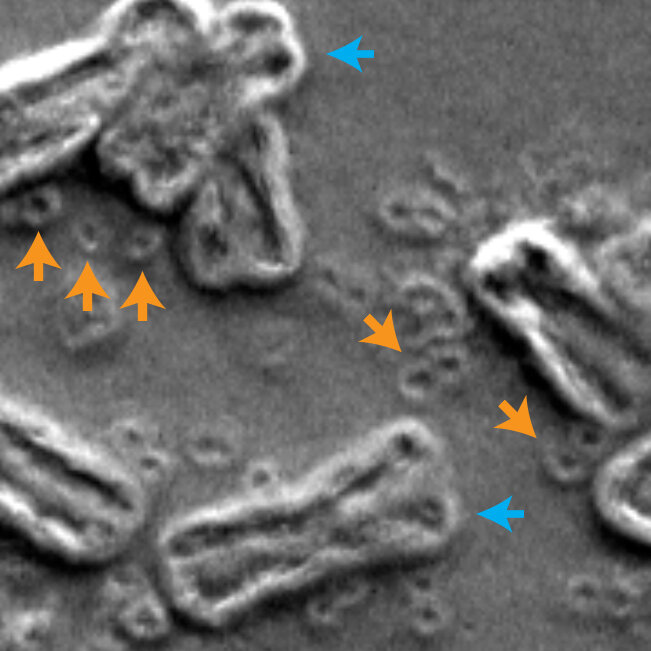#The Anthropocene signature on Mount Elbrus, Caucasus
“#The Anthropocene signature on Mount Elbrus, Caucasus”

Researchers of the Institute of Polar Sciences of the Italian National Research Council and of the Ca’ Foscari University of Venice analyzed fragrances deriving from personal care products and consumer goods in an ice core from Mt. Elbrus, Caucasus. The concentration profile of such fragrances from the 1930s to 2005 follows the trend of polycyclic aromatic hydrocarbons (PAHs) that originate from combustion and industrial activities that showed a marked increase starting from the 1950s, known as the Great Acceleration. The results of this study were published in Scientific Reports.
The profound changes driven by the human impact on the global environment mark the beginning of a new geological era called the Anthropocene.
Plastics or organic and inorganic contaminants can be detected in nearly every terrestrial environment, even in remote areas. The cryosphere can archive such anthropogenic compounds by preserving in ice the contaminants accumulated with snow deposition.
The researchers from the Italian National Research Council Institute of Polar Sciences (CNR-ISP), together with the colleagues from the Ca’ Foscari University of Venice, the U.S. Geological Survey (Denver), the Grenoble University and from the Institute of Geography of the Russian Academy of Sciences, analyzed an ice core drilled on the western plateau of Elbrus, Caucasus. They focused on polycyclic aromatic hydrocarbons (PAHs) like combustion and industrial markers, and fragrances, widely used in personal care products, as representative emerging pollutants, obtaining a profile spanning from the 1930s to 2005.
“We showed how the cryosphere can archive the anthropic signals deriving from both combustion or industrial processes and daily domestic activities, such as using soaps, detergents and lotions,” says Marco Vecchiato, a researcher at CNR-ISP and one of the authors of this study. “Some sufficiently volatile and chemically stable components can be transported also in remote environments.” The air masses reaching the summit of the Elbrus (5642 m above sea level) are, in fact, originated primarily from the Mediterranean and also significantly from Eastern Europe.
This is the first study reporting the distribution of personal care products in ice-cores, as well as the first record of PAH trends in the Caucasus, allowing a direct and straight comparison between classical tracers and emerging pollutants.
Owing to their chemical stability, volatility and persistence, 17 fragrances were selected and analyzed in stainless steel clean-room laboratories at the Department of Environmental Sciences, Informatics and Statistics of the Ca’ Foscari University of Venice, sampling an ice core drilled in 2009.
“Concentrations markedly increased from the 1930s to 2005,” explains Vecchiato. “In particular, the deposition fluxes of amyl, hexyl, and benzyl salicylate show a 20-fold average increase throughout the considered period.”
Starting from the 1950s, this trend became more pronounced, corresponding to the beginning of the Great Acceleration. “This evolution also agrees with other tracers determined in the same ice core, such as sulfates or black carbon, but it also follows the global Anthropocene trend.”
However, the socioeconomic crises that also occurred in Eastern Europe during the 20th century influenced the concentration trends: “Within an overall rising trend, we identified two periods when the contaminants fluxes decreased: The first one corresponds the “era of stagnation” during the 1970s, while the second decrease is synchronous with the dramatic collapse of the USSR in the 1990s. Nevertheless, the deposition of both fragrances and PAHs rapidly started to increase again immediately after,” says Marco Vecchiato.
More information:
Marco Vecchiato et al. The Great Acceleration of fragrances and PAHs archived in an ice core from Elbrus, Caucasus, Scientific Reports (2020). DOI: 10.1038/s41598-020-67642-x
Provided by
Ca’ Foscari University of Venice
The Anthropocene signature on Mount Elbrus, Caucasus (2020, July 17)
retrieved 17 July 2020
from https://phys.org/news/2020-07-anthropocene-signature-mount-elbrus-caucasus.html
This document is subject to copyright. Apart from any fair dealing for the purpose of private study or research, no
part may be reproduced without the written permission. The content is provided for information purposes only.
If you want to read more Like this articles, you can visit our Science category.
if you want to watch Movies or Tv Shows go to Dizi.BuradaBiliyorum.Com for forums sites go to Forum.BuradaBiliyorum.Com




